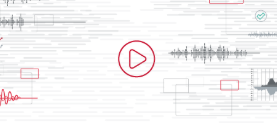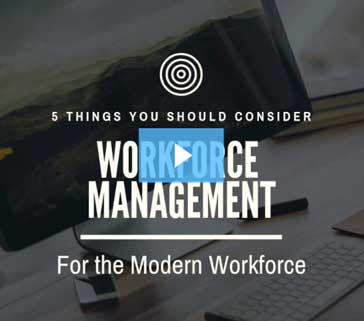Managing Remote Workforce
A Complete Guide to Managing a Remote Workforce
The world of remote work has taken on a new meaning. Now, with more people working from home, contact centers face new challenges in maintaining excellent customer service.
This guide will cover
- What software and equipment are needed for at-home work.
- What technical issues will contact center managers need to address.
- How an on-premise phone system adapts to off-premise work.
- Some staffing best practices that can handle increased agent flexibility.
- How you can best manage increased sick leave claims.
- How you can ensure GDPR/CCPA compliance with at-home work.
- Determining which agents need VPN access to prevent server overloading.
- Minimum security measures for at-home agents.
- Best practices for coaching agents remotely.
- Suggestions/actions for reporting, data management and quality assessments
Want to know how to launch a virtual Contact Center in days?
Technical Considerations
Staffing Considerations
Analytics & Reports
Communication Best Practices
Jump to section
Jump to section
Technical Considerations
To start, they will need a workstation and a solid Internet connection. Laptops are preferred for flexibility, but desktops work as well. They will also need a headset and a webcam if their computer doesn’t have one embedded. This is a great opportunity to engage your managed services team for additional ideas. Use wired headsets that connect either through USB, 3.5mm audio hack or standard red/white RCA cable. Avoid wireless or Bluetooth headsets if possible; any interference from an agent’s home devices could lead to dropped calls. Wired devices make things much easier from a support perspective. Most standard webcams will work, including those built into laptop frames. For agents using desktops, seek out a webcam that can clip onto the top of their monitor. While many standard webcams capture audio, avoid using them as the only audio output. You’ll want agents to have clear communication with customers.
If possible, have agents hard-wire their computers with an Ethernet cable to their home routers. Wireless connections may experience interference if other nearby users are taking up bandwidth. With so many people working from home, reliability from wired connections is crucial.
There are certainly more backend technical issues when adapting an on-premise system to remote work. You may need to reach out to IT developers and cloud hosting providers for some immediate aid.
Security Considerations
Compliance with data privacy laws doesn’t stop when agents work from home. Using a compliant service provider, either on-premise or in the cloud, will help maintain customer data protection. You can also update internal policies to ensure employee information is anonymized at the time of entry.
For Calabrio Teleopti WFM customers who are using On-Premise version of our software, connecting to the VPN is needed for certain roles. Anyone who needs to access the Calabrio Teleopti WFM on-premise software will likely require VPN access, but it is important to talk to your local IT group for clarification.
For Calabrio Teleopti WFM customers who are using our cloud offering, VPN access is generally not needed to connect, but may be required in special circumstances. Again, it is recommended you discuss with your local IT for any considerations.
For on-premises deployments of Calabrio ONE, the specific recommendations and requirements for remote agent connectivity to Calabrio ONE will vary by customer. Connectivity requirements are dependent on the recording type and the customers technology components. Customers are encouraged to contact Calabrio Support with questions specific to their implementation.
For Calabrio ONE Cloud customers, there should be no changes required for an employee to access Calabrio ONE when moving from the office to remote.
In a non-Calabrio sense, VPN access may be required to access other critical systems, such as CRMs, billing systems, and other software needed to continue business. It is very likely that your company has put together guidelines that dictate who should use the VPN and who shouldn’t, to keep the bandwidth clear for critical uses.
At the very least, agents must have workstations with updated security patches, and antivirus programs applied. Make sure agents restrict workstation usage to themselves only, limit any personal activity, and enforce reasonable time-outs for sensitive programs. Software-as-a-service programs would also help alleviate some of these manual actions.
Staffing Best Practices
You get more flexibility at home with micro-shifts. You don’t have that mid-day hump of overlap with day/night shifts, and you can spread things out better. You should see more efficiency in schedules. Also, take the lack of daily commutes into account. If your agents don’t need to spend 45 minutes in traffic each day, that’s more time available for work.
Allow agents to submit an absence request without validation (call out absence).
Build CRA SQL reports to understand what regions report more call out absences than others. To compensate for high absence, allow for more overtime. Consider loosening up internal policies around overtime, but make sure you’re not breaking any labor laws. Use auto approving overtime requests to be more flexible, no need for supervisors to manually review and approve!
You get more flexibility at home with micro-shifts. You don’t have that mid-day hump of overlap with day/night shifts, and you can spread things out better. You should see more efficiency in schedules. Also, take the lack of daily commutes into account. If your agents don’t need to spend 45 minutes in traffic each day, that’s more time available for work.
As agents transition to remote work, they are likely to have technical issue. Add a higher shrinkage to your forecast to compensate
Communication Best Practices
Make sure you communicate. If you held huddles in person, maintain them if you can. Some people adjust faster than others. It’s okay to feel uncertain about this whole process. That team feeling is not going to go away. Also, make sure your agent calendars are up to date. You can’t just ask something across the room.
Utilize group chat tools, like WebEx, Skype or Microsoft Teams, throughout the day. In the office, you used to be able to turn around and talk to the whole team. Now you must leverage these tools for distance communication.
This is a time to be flexible. Using your workforce tools, like calendars, to manage schedules. If agents need to tend to family or home issues, build it into their schedule. You might have to give a little bit, but agents have more flexibility. Remove the stigma of kids, dogs and doorbells in the background. We’re all dealing with this together.
Necessity is the mother of invention. Any sort of creative scheduling is mandatory, because people aren’t working 9-to5 right now. Throw your current policy out the window and figure out what works best.
Industry Insights - The Evolving World of Work
5 key trends for post-pandemic customer service
Analytics & Reporting
We’d recommend not changing the scorecard yet. We don’t know how long this will last, or if the effort into changing the scorecard will make it worthwhile. You’re resetting expectations with employees. Stay the course.
Building categories is essential for sorting through the data. Categories are built around specific business issues, like customer experiences or call drivers. You can drill down into individual interactions from those categories
Categories are derived from what customers are saying, not what they are doing. They are the words and phrases that customers are using when talking to agents. You want to make sure agents are being consistent in messaging. Analytics can help pinpoint areas of concern quickly
Look for phrases and words that indicate an effect on financial, health, investment or personal strategies. The COVID-19 crisis, for example, included various phrases indicating changes to health, personal finances, hospitality cancellations, and payment deferrals. Any issues related to health or financial concerns will drive increased call volume and strain business resources.
Whether you use an exiting list of categories or upload a recommended list, start asking your QA and subject matter expert teams what customers are asking about. Every organization is going to have different needs. Use the phrases and words that your teams are hearing and update the categories accordingly.
Understand that metrics will fluctuate in the near-term. What works in the office doesn’t necessarily work from home. Talk time might be longer, metrics might shift. Look for trends in the next few days.
We have collected a list of suggested phrases and words to track in the near future, currently available for customers within our Customer Success Center. In general, look for phrases that mention cancellations, the virus itself, or its symptoms, and technological issues regarding system slowdowns or lock outs.
Best Practices for Enabling Agents to Work from Home using Calabrio Software
As your workforce moves to a remote working environment, there are some best practices we encourage you to follow when it comes to enabling virtual employees.
The section below will walk you through steps within the Calabrio ONE platform to maintain consistent agent connections, configure call recording from remote sites, monitor performance and quality outside of the office and take advantage of agent flexibility in scheduling.
We hope that these resources will ensure your agents have a successful work from home experience and continue to provide exceptional customer service.
Accessing Calabrio ONE
When moving employees from working in the office to working remote, there are a few things that our on-premises customers will need to review:
- Cloud – if you’re on Calabrio ONE Cloud you’re set, there should be no changes required for an employee to access it when moving from the office to remote.
- On-premises – you’ll need to make sure the Calabrio ONE signed certificate or Certificate Authority is trusted so it does not present a Certificate Error to the agents and supervisors. You’ll also want to ensure users are accessing Calabrio ONE through a VPN. For legacy 9.x customers, you’ll simply need to ensure remote employees are accessing through a VPN.

Recording
CONFIGURING WORK FROM HOME AGENTS FOR RECORDING
This is dependent on the recording architecture you are currently using:
Network Recording — Network recording is defined as streaming RTP to a Calabrio server for recording. Examples of this are Cisco BiB recording, Avaya DMCC recording, etc.
- In a Cisco BiB recording environment, ensure the phone (software or hard phone) has connectivity to the voice record servers through a VPN connection.
- In a Cisco Network Based recording environment, call control is still handled the same way as with Network Recording, but the RTP is streamed from a Gateway instead of a phone, saving significantly on bandwidth when agents work from home.
- In an Avaya DMCC environment, the RTP is streamed from the Avaya Media Server, so remote phone connectivity to the voice record server is not required in most cases.
Gateway Recording
Gateway recording is defined as streaming RTP to a Calabrio server for recording from a support Session Border Controller. In these environments, having office workers change to remote workers doesn’t change their configuration. In most cases, gateway recording is a way to natively support remote workers.
Smart Desktop Client
End-point recording is defined as recording audio/screen locally on the PC via the Smart Desktop Client (SDC). In most cases, if end-point recording was working in the office, it will work in a remote setup with the only difference being a VPN connection for On Premise deployments of Calabrio ONE. Ensure the client has connectivity to Calabrio ONE platform (on-premise or cloud) for the client to receive configuration and upload recordings.
Other recording-related items to consider when moving employees to work remote:
- We recommend you configure immediate upload of recordings to move them off the agent PC as soon as possible.
- Extension or device changes: Are there changes to configuration that need to be setup?
- Hard phone vs. soft phone configuration: Soft phone being more widely supported for remote agents.
- VPN connectivity: Can the Calabrio software connect to the required Calabrio servers hosted on-premise or in the cloud?
- Bandwidth considerations for live audio monitoring, streaming or uploading media from remote employees:
Generated audio media data that is uploaded to Calabrio for processing and storage requires network bandwidth availability. To ensure no interruption to uploads, voice communications, or any other customer applications, it is highly recommended that you calculate your estimated bandwidth consumption based on the formulas below and understand how this will impact your network.
Recording time = (# of users) × (# of calls per user per day)× (avg call length (minutes))
Upload bandwidth:
- Audio recordings = 0.48 MB × recording time
- Screen recordings = 1.5MB per minute, per monitor
We understand there are many options to consider when enabling employees to work from home. Please continue to refer to the Calabrio Success Center for up-to-date information. If you have more specific questions on configuring Calabrio to support work from home agents in your environment, please contact Calabrio Support.
ENSURING SECURE, RELIABLE RECORDING OF AGENTS
REGARDLESS OF WHERE THEY SIT
Once you have your agents configured and tested to record while working
remote, use monitoring and notifications to check status and be alerted if agents stop recording.
Interested to know more about Calabrio Call Recording?
Call recording that’s reliable, simple and secure.
Workforce Management
SCHEDULING YOUR WORKFORCE TO MEET CUSTOMER NEEDS WHILE WORKING FROM HOME
Working from home will likely provide your employees with more flexibility in terms of start and stop times. There will also be times when they’re unable to work due to situations like childcare. We highly encourage our customers to use WFM functionality such as OT requests, Absence Requests, Intraday Dynamic Scheduling and Self-Scheduling to adapt to the added flexibility of working from home, while still meeting business needs.
Below is a summary of the Calabrio WFM features and functionality you can use to increase flexibility with your remote workforce and meet customer needs.
- Overtime Requests: If employees would like to work overtime, they could use this feature to help manage their schedule.
- Absence Requests: Employees can request absences based on times they cannot work, based on their situation.
- Intraday Dynamic Scheduling (Calabrio WFM): Employees can take overtime or voluntary time off, based on guidelines set by the organization. Approved requests will automatically get incorporated into the schedule. Using this feature will help customers tap into additional functionality that some employees will have when working from home.
- Self-Scheduling (only available in Calabrio Teleopti WFM): Provides agents the ability to move their own lunches and breaks for today and six days forward. This empowers agents and reduces the need for manual changes by team leaders or administrators.

Quality Management
MONITOR PERFORMANCE AND KEEP EMPLOYEES ENGAGED WHEREVER THEY RESIDE
Quality Management is an important tool to help monitor agent and call performance regardless of where agents reside. It can also help keep remote employees engaged, motivated, trained and on task. Below are some tools within Quality Management we encourage you to use with supervisor and agents working from home:
- Gamification: Can be leveraged for friendly competition among remote workers or with on-site counterparts.
- Post-call surveys: Assess call and agent quality and get customer-specific input on key/current situation and topics.
- Evaluations:
— Can be customized to include questions specific to remote workers, allowing easy comparisons over time between remote and on-site workers.
— Setup your forms to provide agents with a feedback loop, allowing them to review and respond to evaluations and giving them a voice in the evaluation process. - Dashboards and Reports: Create dashboards and reports in Data Explorer for supervisors and agents, showing how agents are performing over time, especially if they’re transitioning to a work from home environment.
- Contact Goals: Keep evaluators assigned to specific tasks and focused on the most relevant calls.
- Contact Queue: Keep agents engaged and trained by assigning them calls to review. For example, assign calls that provide good examples of handling anxious or frustrated customers. You can setup notifications to alert when tasks are complete.

Analytics
MONITOR PERFORMANCE AND KEEP EMPLOYEES ENGAGED WHEREVER THEY RESIDE
Listening to customer calls right now to find trends probably sounds overwhelming. Are you curious how your agents are handling being at home? Are you wondering how your customers are reacting? Analytics can take away some of that burden.
- Sentiment Analysis Dashboard: This is a pre-built dashboard to help give a score of positive, negative, neutral, positive score to 100% of your call interactions coming into the contact center. This information also displayed within the media player, so you can quickly spot statements within a call by sentiment.
- NPS
- Evaluation Scores

Homepage Dashboards And Data Explorer
MONITOR PERFORMANCE AND KEEP EMPLOYEES ENGAGED WHEREVER THEY RESIDE
Data Explorer powers your Calabrio ONE homepage dashboards as well as your custom reporting dashboards. This means that you can combine highly customizable widgets and reports—along with webpages, text, and images into a single dashboard. Data Explorer helps slice and dice data from across the Calabrio ONE suite, providing insights on the contact center performance and how your agents are doing at home.
- Agent Performance Dashboard: A dashboard designed with their KPIs in a color-coded visualization. This gives agents the ability to see how they are performing at a quick glance, while managers can keep an eye on agents themselves. From these metrics, a manager could quickly decide to engage with an agent if they have challenges working from home.
- Contact Center Metrics: Have a pulse on metrics that are important to your contact center in one spot, with the ability to quickly filter by different parameters such as team, location or agent.
Don’t have Data Explorer? We launched it in our v10 release. To learn more about enabling the technology, check out this document for a step-by-step guide.
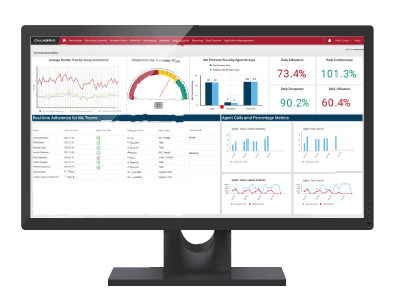
GENERAL BEST PRACTICES, TIPS AND TRICKS
Below are some best practices, tips and tricks for enabling remote workers. We’d love your feedback and ideas.
STAYING COMPLIANT
For your industry or location, are there specific requirements for remote workers? These resources show how Calabrio can help with HIPAA, GDPR, PCI or CCPA.
KEEPING YOUR AGENTS ENGAGED
- Foster a community and collaboration—out of sight can mean out of mind. Think about how you can convert the typical office environment into a virtual space that still provides what employees need. Use technologies such as WebEx, Lync or FaceTime for “face-to-face” meetings to provide coaching and feedback. This is a great way to establish rapport and trust with employees.
- Monthly 1-on-1 with agents: This is a good practice regardless where the agent sits, but it’s even more important when agents are remote. Use video conferencing as mentioned above whenever possible.
- Weekly meeting and updates:
— Provide a weekly corporate update where all employees log-in
— Meet weekly with peer/veteran coaches - Team building events: When appropriate, consider monthly or quarterly on-site team building events where all agents and supervisors in the region communicate together.

Additional Resources

Webinar: Managing Change in the New Reality
Change management has suddenly become a major priority. Is it baked into your contact center strategy? Watch the webinar to learn more.

Webinar: Resources to Help Make Remote Work Actually Work
Learn more about companies are managing fully remote workforces for the first time.

Webinar: How to Use Analytics to Manage and Respond to Crisis
Many of our customers are experiencing a significant increase in customer interactions, as well as new challenges associated with agents working remotely.

Webinar: Best Practices for Keeping Remote Employees Engaged
As your brand’s voice on the front line, it’s imperative to find new and unique ways to keep your remote agents motivated to maintain performance and deliver quality customer care.

Ebook: Best Practices for Enabling Agents to Work from Home
Download our new Ebook to learn Calabrio application-specific checklists and best practices to ensure your agents have a successful work from home experience and continue to provide exceptional customer service.

Webinar: Delivering Great Customer Experience in a Work-From-Home Environment
In this period of disruption and uncertainty, it’s never been more important to be focused on your customers and employees.

Webinar: Rapidly Moving to a Work-from-Home Model in Your Contact Center
In this webinar on demand, Calabrio experts answer your most pressing questions, from dealing with bandwith issues to ensuring agents are still working while at home.

Calabrio Success Center Resources: COVID-19
In response to current events, we’ve created dedicated forums for you to share experiences, and have launched a COVID-19 Resource Center on the Calabrio Success Center for you to easily access these evolving resources.

Datasheet: Q&A on Using Analytics to Manage and Respond to Crisis
Calabrio hosted a webinar on how to use analytics to manage and respond to crisis. We hope this collection of common questions will help develop your analytics strategy in this challenging time.

Webinar: Navigating Data Security and Compliance in a Remote Workplace
To learn more about identifying and mitigating security risks in a remote workforce setting and best practices in unconventional times, we hosted a webinar and open Q&A session.

Datasheet: Q&A on the Rapid Shift to Work-from-Home Model for Contact Centers
We fielded dozens of questions from attendees of a webinar on work-from-home model (WFH) strategies for contact centers and have created this resource to address many of your concerns.
BLOG POSTS

Flexible Working:
A 3 Point Plan
Flexibility in contact centers means many things to many people. It usually means making life easier for agents, enabling them to strike the all-important work/life balance.

How to keep your remote agents connected and engaged
If you are looking for ways to engage your remote employees (or brick and mortar) here are a few tips to get you on your way

If You Love Your Agents Set Them Free
The morning grind. The daily commute. Rush hour. These days, the colloquialisms we use to refer to our workday travels don’t need to hold true.
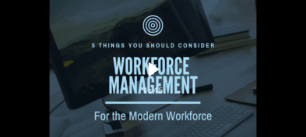
5 Important WFM Software Considerations
What should you consider when evaluating new workforce management (WFM) software? Watch this video to learn five things in WFM that you may not realize make a big difference in managing your contact center.

Rethinking Workforce Management
As contact center professionals, we all understand the importance of workforce management tools and processes in ensuring that we have enough agents to work each shift.
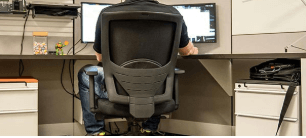
4 Ways to keep your contact center agents engaged
Those who work in the contact center understand a very different truth: engaged, experienced contact center agents are more important than ever

How to keep your remote agents engaged
Today, people want to work their own hours, choose where they work and do so without the restrictions of formal direct supervision in a traditional office setting.
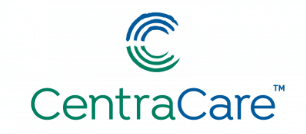
Anytime Anywhere Visibility
CentraCare uses Calabrio ONE to permit visibility into forecasts and schedules, use different scheduling types for different needs, and ensure consistent customer/patient service.
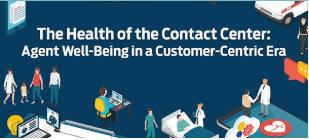
The Health of the Contact Center
In today’s competitive landscape, brands are recognizing that creating a first-rate customer experience is a significant differentiator and the key to establishing customer loyalty.

Flexibility is key
With customer expectations at an all-time high, brands have never been under more pressure to deliver a great customer experience

The Definitive Primer on Employee Engagement
There’s a massive shift underway in today’s contact center: yesterday’s focus on workforce optimization (WFO) is morphing into a new focus on employee engagement.
VIDEOS
Tips for QM with Remote Workers
Quality Management is an important tool to not only help you monitor agent and call performance regardless of where the agents sit
Empower Remote Agents with Workforce Management
COVID-19 has highlighted the need for workplace flexibility as more employees work from home and are faced with other constraints such as school closures and childcare.
Technical Tips for Enabling Remote Agents
As you’re preparing for some or all your workforce to work from home, there are some best practices we encourage you to follow
Quality Management – Last Date Time of a contact by a person
This video covers how Quality Management users can build a quick and easy report to ensure their agents are being recorded properly.
Using Desktop Analytics to Spot Slow Downs with Remote Agents
Desktop Analytics offers insights into agent activity and allows managers to discover and help fill educational gaps when needed.
How to use WFM to Empower a Remote Workforce
Has your team transitioned to a remote / work from home model? Learn how to creatively use Calabrio WFM and Calabrio Teleopti WFM features.


